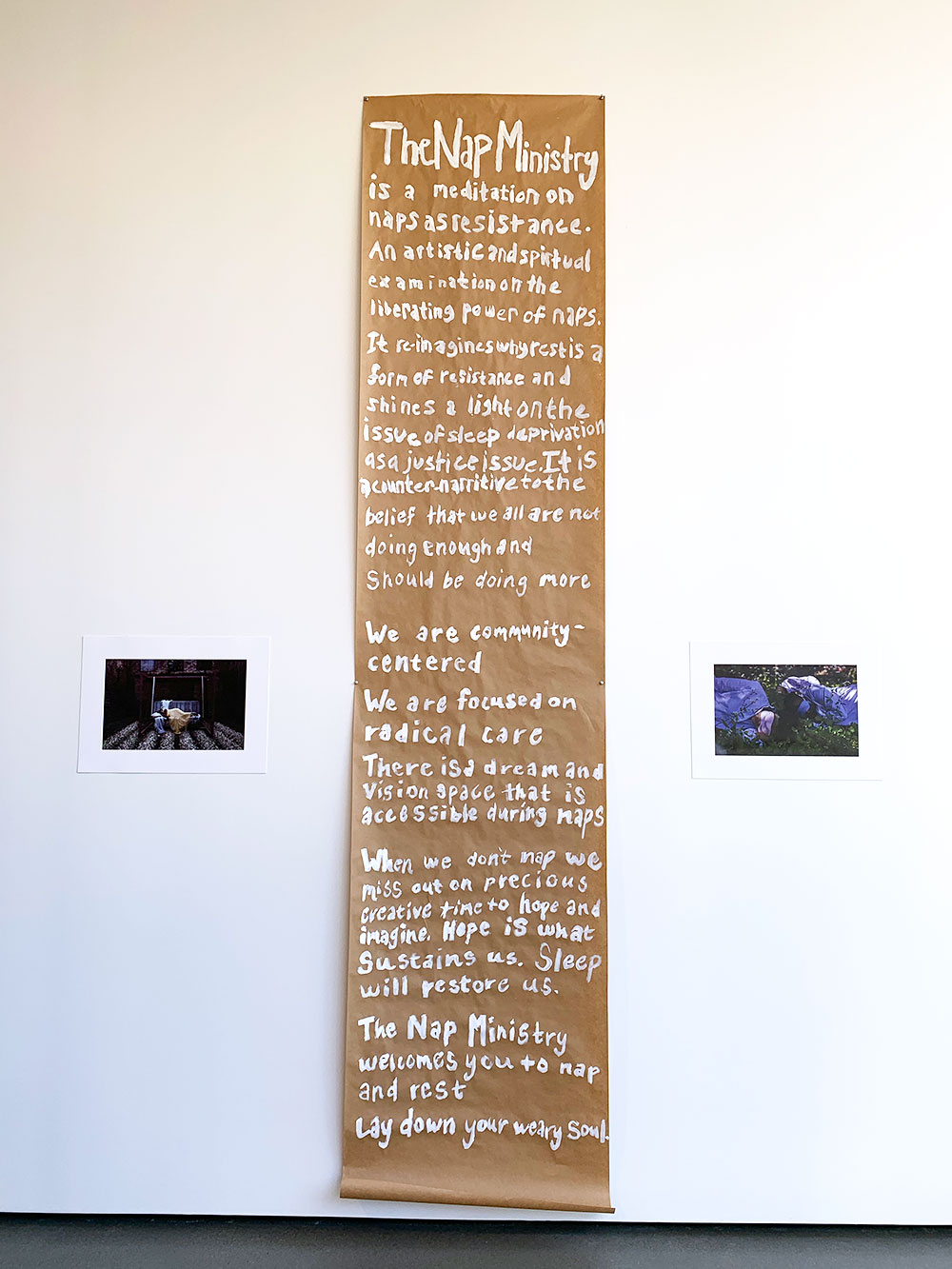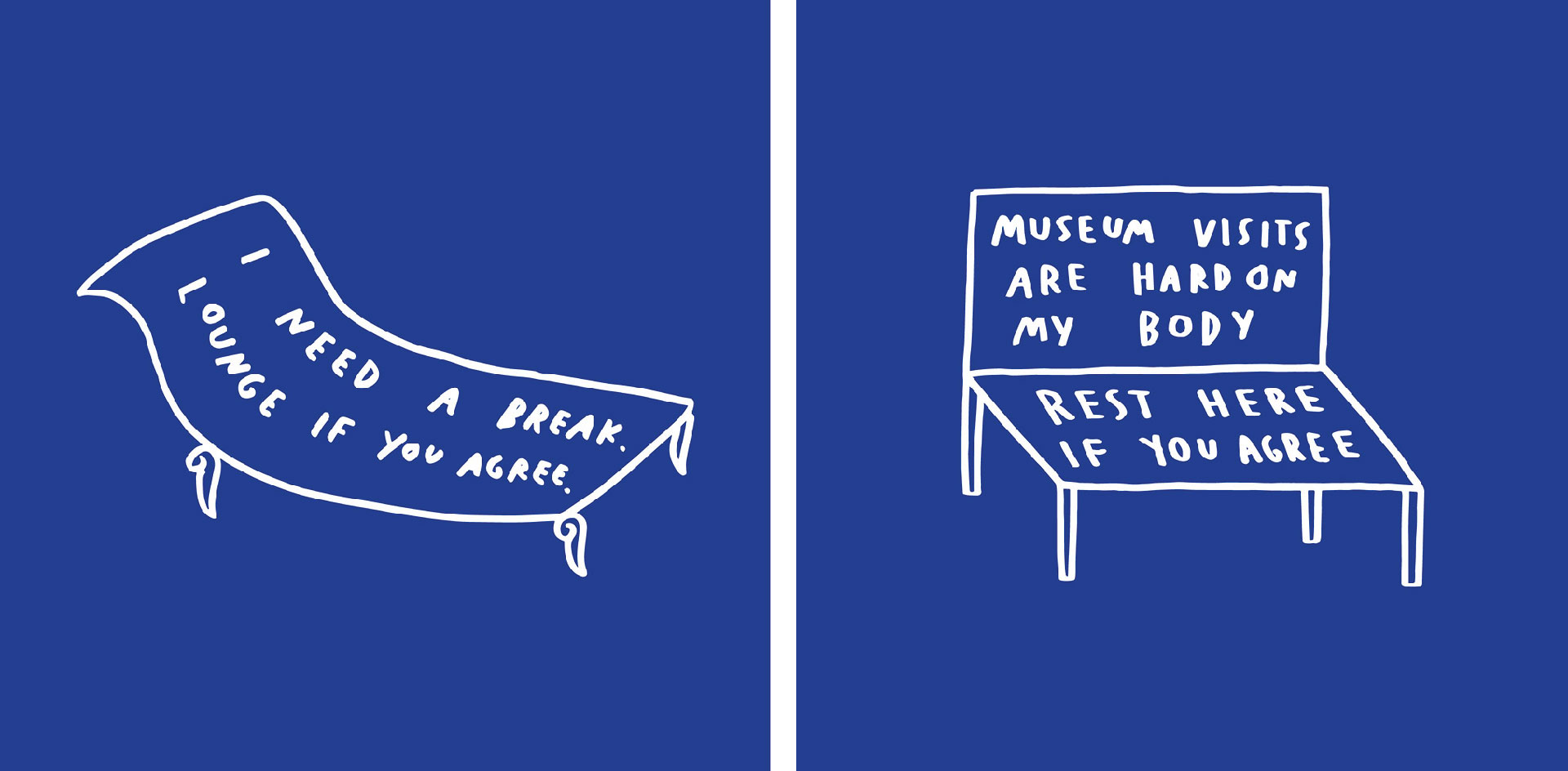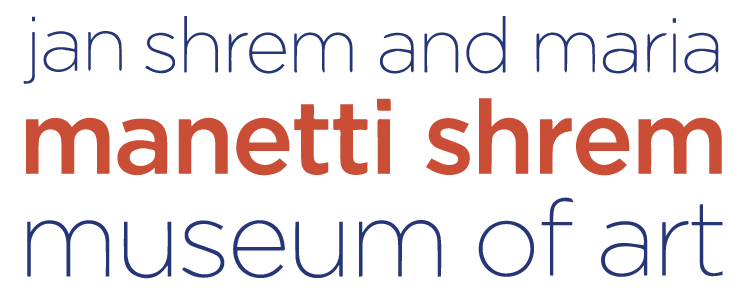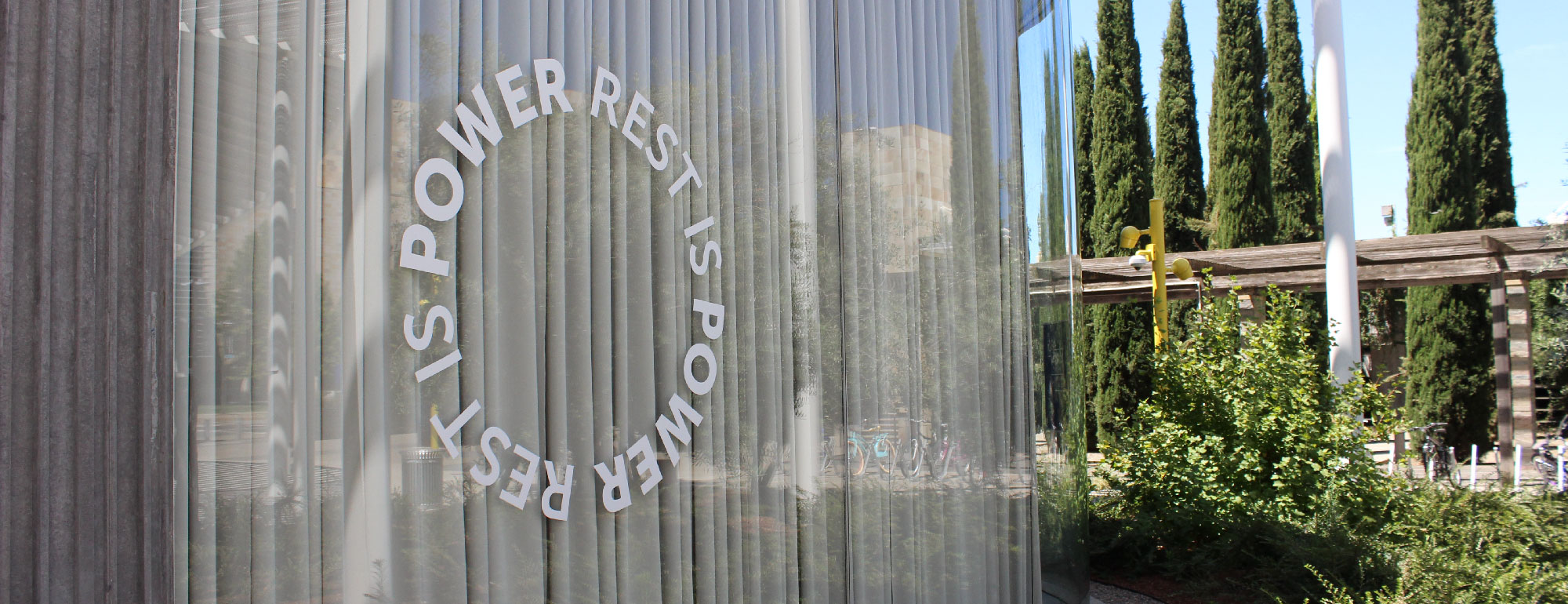Shortly before the mandate to shelter in place, a group of extraordinary students curated Rest is Power, an exhibition about how rest has been historically denied to Black and Brown, Disabled and Queer bodies. Rest is Power is curated by: Heidi Herrera, Rita Huang, Abby Robertson, Micaella Sanchez and Alexandra Thoits. The student curators would like to thank the staff of the Manetti Shrem Museum and the UC Davis Art History Program.
Rest is Power
Are you tired? Rest.
When we rest, we harness our power to resist the forces of society that demand ceaseless labor and productivity.
Sleep is in crisis. Exploitative socioeconomic systems frame sleeplessness as an individual problem to be solved by pills, apps, and other sleep aids. While sleeplessness defines our contemporary collective experience, access to rest has long been contingent on one’s race, sexuality, gender, dis/ability, and class. People of color and low-income communities are particularly vulnerable to systems of racialized, sexualized, and gendered violence that negatively impact their quality of sleep. Moreover, students from these communities, like all students, are exposed to late capitalist ideologies that normalize sleep deprivation and frame sleep as transactional. Despite the campus’s promotion of naps and healthy sleep practices, their rhetoric reinforces toxic discourses around optimization and productivity that prepare students to enter workplaces as instruments of profit.
Rest is Power positions sleep/lessness as political. In the Collections Classroom, works by Richard Anuszkiewicz, Robert Arneson, Leonard Brammer, Lynda Frese and Malaquias Montoya track the historical foundations of contemporary sleeplessness. In the North Lounge, the exhibition initiates a dialogue between artists who center the experiences and bodies of marginalized communities as a reclamation of rest and a rejection of the constant hustle demanded by late capitalism. Reflecting on rest as care and resistance, Tricia Hersey (founder of The Nap Ministry), Charlie Watts, Sophia-Yemisi Adeyemo-Ross, Samantha Maria Xochitl Espinoza, Shannon Finnegan, and Malaya Tuyay counter intergenerational exhaustion and ongoing oppressions to imagine spaces where all can dream of liberation. Together, they invite us to reconsider our individual and collective relationships with rest as a site of power, abundance, healing, and justice.

Sleep Has Always Been a Social Justice Issue
The success of modern capitalism is rooted in socially-constructed notions of race used to justify the exploitation and commoditization of enslaved peoples through the exaggeration of racial differences. In his memoir, Frederick Douglass noted how the enslaved were kept in a state of constant fatigue and psychological stress; forced to work 15 to 16 hours a day and denied access to a safe place to rest. Neoliberalism compounds the continued effects of slavery, inducing a sleep gap wherein racialized minorities are forced to forgo sleep in order to work increasingly long hours for lower pay and sleep in unsafe and uncomfortable rest environments.

During the eighteenth century, Enlightenment thinkers promoted ideas about the superiority of rationality and time’s linear progression. Enlightenment thought and the economic effects of the invention of artificial light during the second industrial revolution reconceptualized sleep as idle, wasted time. Rejecting scientific and empirical methods for ascertaining truth and embracing non-disciplinary forms of knowledge, counter-Enlightenment thinkers like poet William Blake viewed sleep as a point of entry to dream and prophesize. Richard Anuszkiewicz optical art painting, Inward Eye, illustrates Blake’s rejection of rationality, favoring romantic experience and the importance of internal imagination.
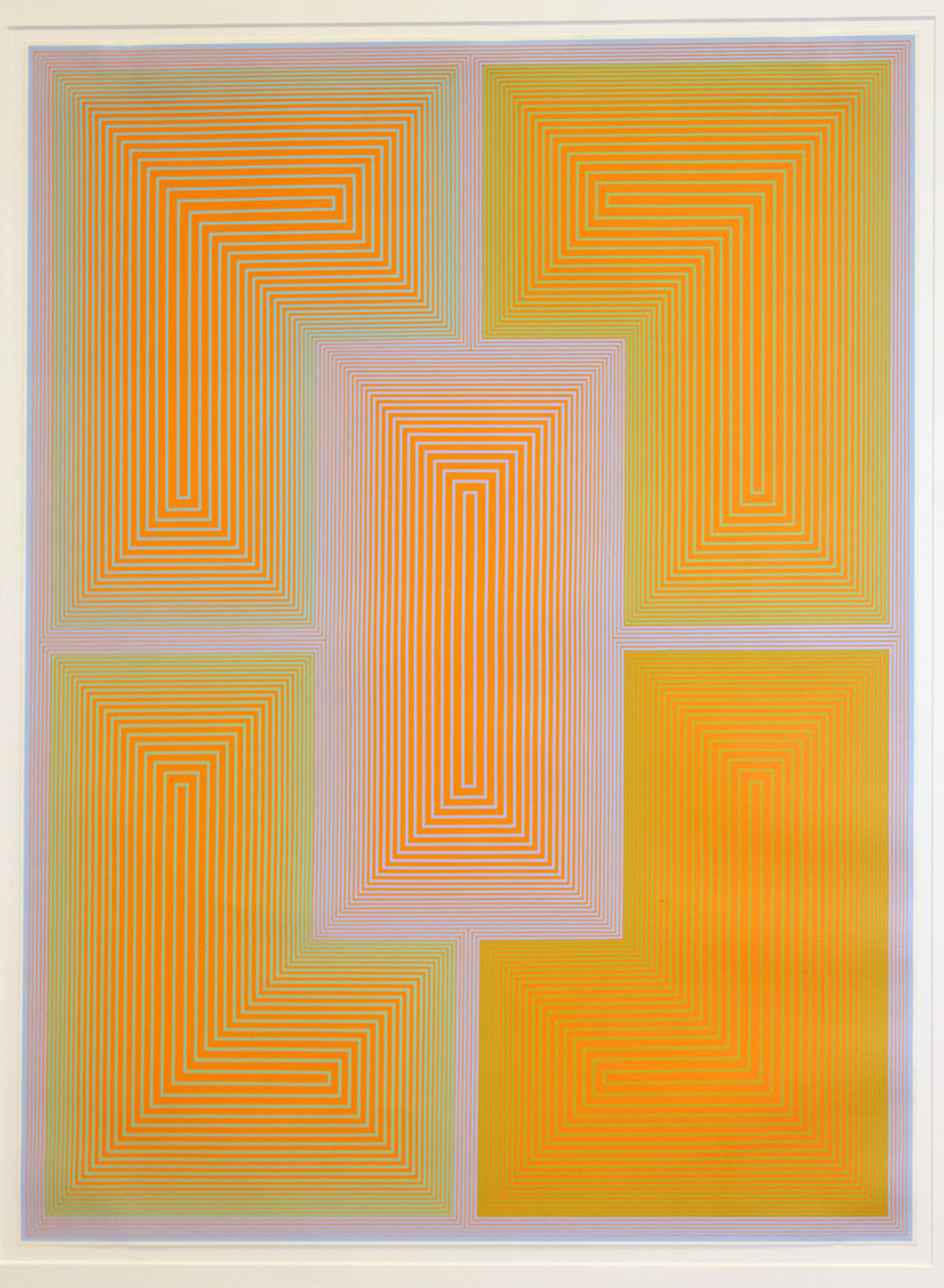
Richard Anuszkiewicz, Illustration for William Blake, Inward Eye, 1970. Silkscreen on paper, 25 1/4 x 19 11/16 in. Fine Arts Collection, Jan Shrem and Maria Manetti Shrem Museum of Art. Museum purchase. © Richard Anuszkiewicz
Rest is a Form of Resistance
Reparations for slavery are a part of a broad social justice strategy to redistribute wealth. The reparations movement exposes the way the United States is built on centuries of white privilege, unpaid labor, violence and exploitation of Black people. Highlighted by Robin D.G. Kelley, author of Freedom Dreams: Black Radical Imagination (2002), reparations, payments or resource dispersal are not the penultimate justice. According to Tricia Hersey, founder of The Nap Ministry, “reparations don’t have to look like a check; they can come in the form of rest.”
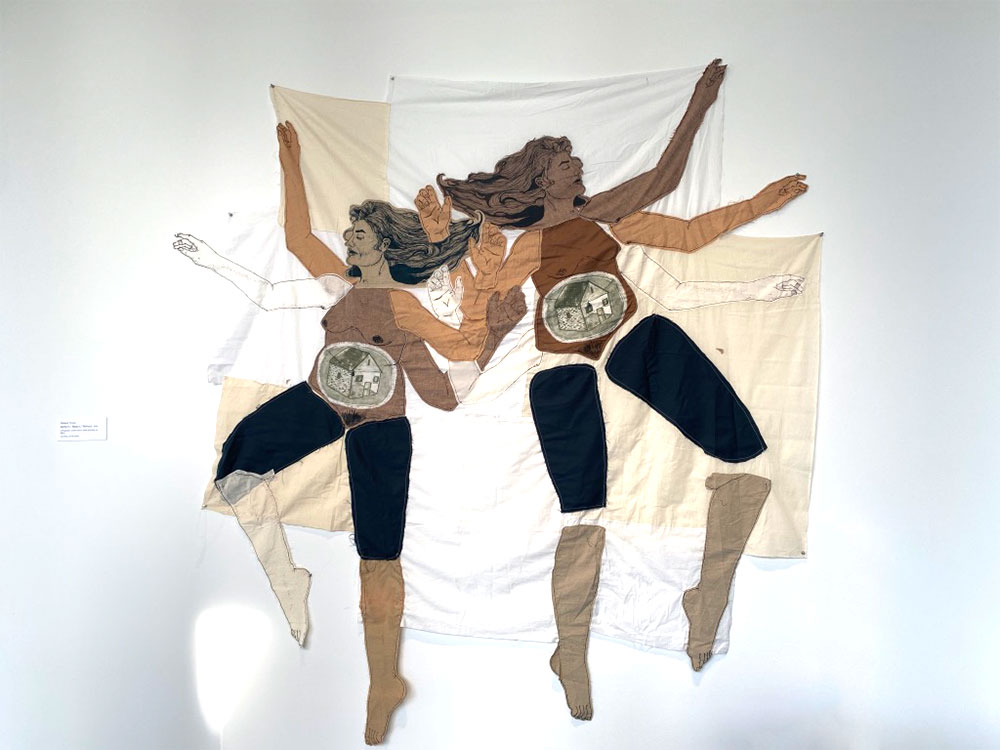
Rest is a form of reparations and a critical means to build space to dream of a liberatory future. While typically considered powerful political forces, the rest and reparations movements reframe rest, abundance, quiet and non-work as potent forms of activism and self-preservation.
The Nap Ministry is a meditation on naps as resistance. An artistic and spiritual examination on the liberating power of naps. It reimagines why rest is a form of resistance and shines a light on the issue of sleep deprivation as a justice issue. It is a counter-narrative to the belief that we all are not doing enough and should be doing more. We are community centered. We are focused on radical care. There is a dream and vision space that is accessible during naps. When we don’t nap we miss out on precious creative time to hope and imagine. Hope is what sustains us. Sleep will restore us. The Nap Ministry welcomes you to nap and rest. Lay down your weary soul.
